TL;DR
The fastest path to eco‑friendly, low‑maintenance landscaping is simple: cover bare soil, right‑size hardscaping, and plant drought‑tolerant natives and ground covers that block weeds. Start with 2–3 inches of mulch, add pre‑emergent in early spring, and stabilize slopes with spreading perennials. Use ReimagineHome.ai to test small‑yard layouts, drainage-friendly patios, and native plant massing from a single photo: https://www.reimaginehome.ai/?utm_source=blog
TL;DR
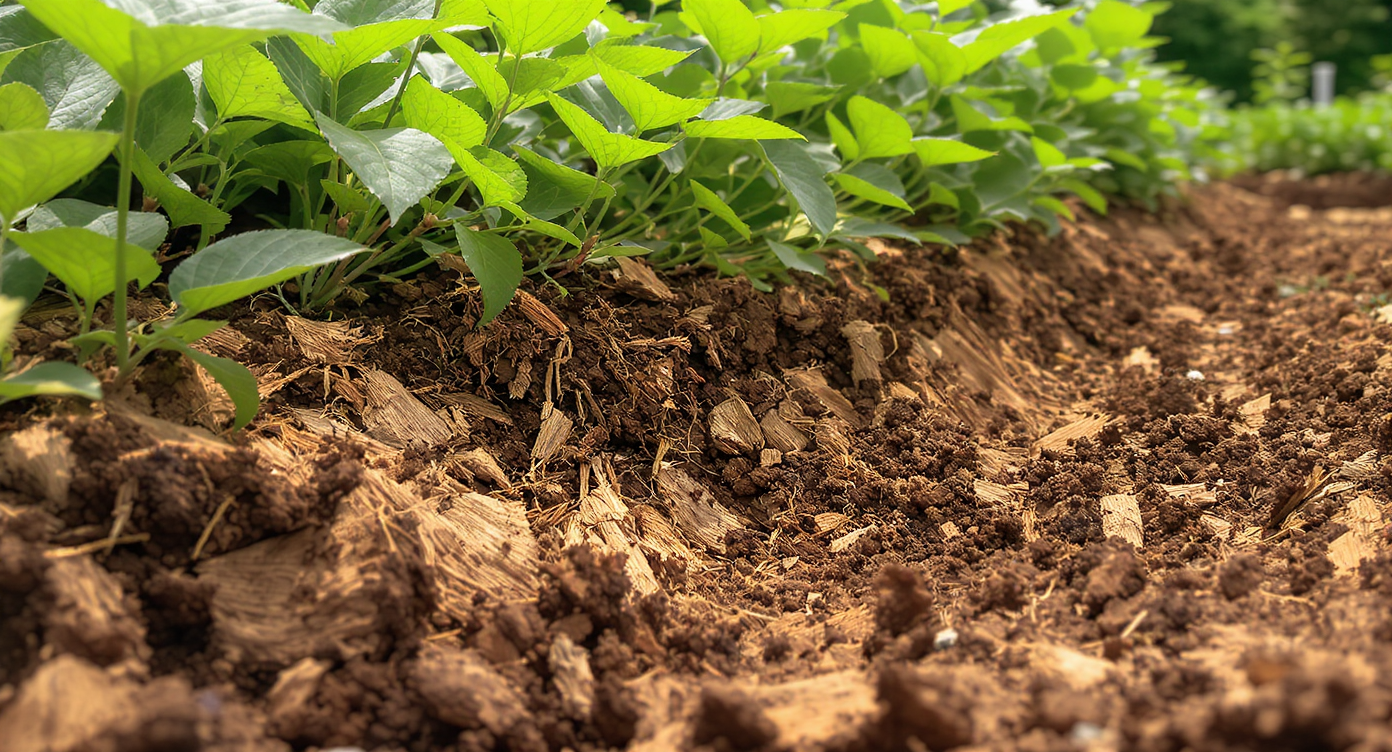
Mulch-covered soil with native ground covers efficiently suppresses weeds and retains moisture.
The fastest path to eco‑friendly, low‑maintenance landscaping is simple: cover bare soil, right‑size hardscaping, and plant drought‑tolerant natives and ground covers that block weeds. Start with 2–3 inches of mulch, add pre‑emergent in early spring, and stabilize slopes with spreading perennials. Use ReimagineHome.ai to test small‑yard layouts, drainage-friendly patios, and native plant massing from a single photo: https://www.reimaginehome.ai/?utm_source=blog
Why Outdoor Design and Curb Appeal Matter Right Now
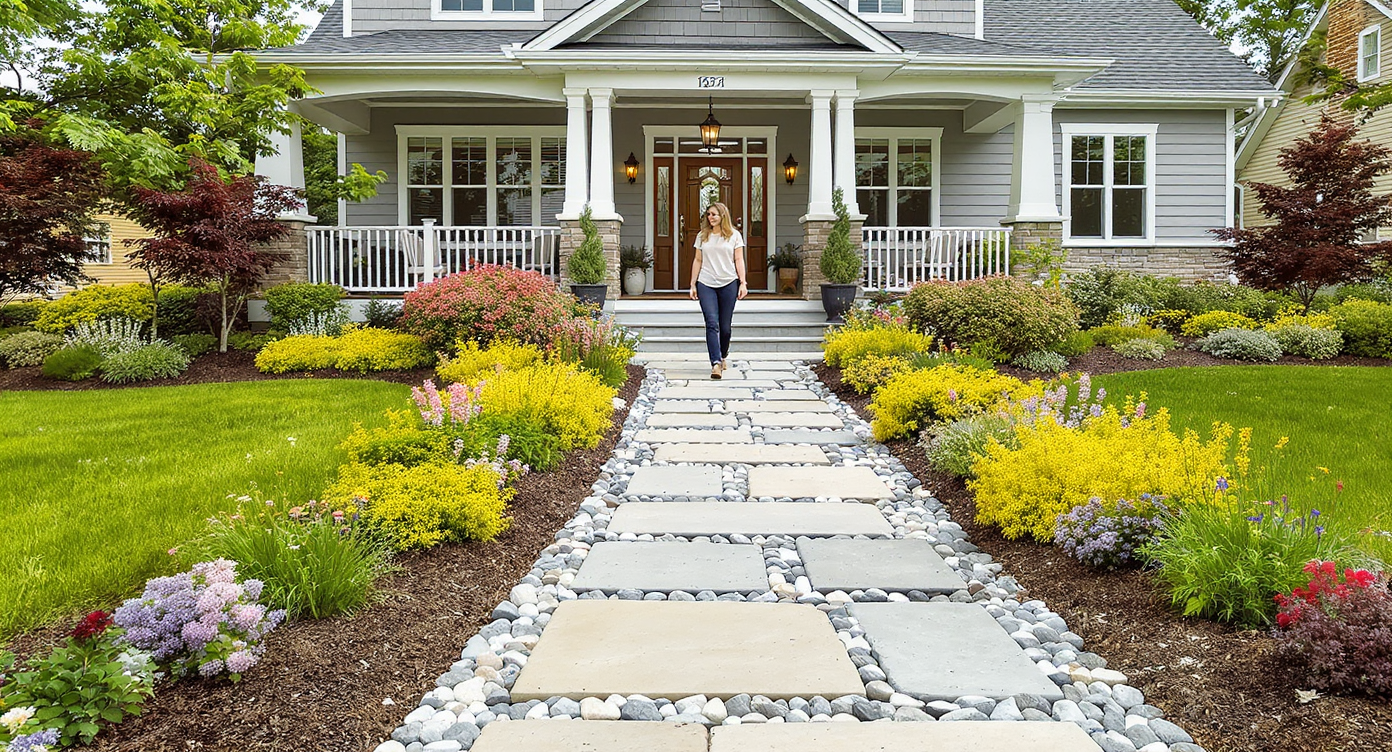
Thoughtful outdoor design balances path width and plantings to enhance curb appeal and ease of use.
Primary garden paths typically range from 36–48 inches wide for comfortable use. Good outdoor design balances function, biodiversity, and maintenance. Prioritize clear circulation, weed suppression, and drainage so water moves away from the house and through the landscape predictably. For curb appeal upgrades, tighten your material palette, mass plants in groups of odd numbers, and light key verticals (entry, trees) for safe, welcoming arrival. - At a glance overview — top priorities: weed suppression, drainage, slope stability, and small‑yard layout clarity. - Drainage, layout clarity, materials, plant choices, outdoor living flow. - Modern curb appeal upgrades and before/after expectations. Want to see these ideas on your home? Try https://www.reimaginehome.ai/?utm_source=blog using just a photo.
Anecdote
I watched a homeowner tame a steep, weed‑ridden slope by spacing native sedges and creeping phlox 12–15 inches apart, pinning jute netting for the first season. By year two, erosion disappeared, mowing ended, and mulching dropped to a quick edge‑refresh each spring.
Why Landscaping, Gardening & Hardscaping Are Changing

Integrating sustainable hardscaping and native vegetation helps adapt outdoor spaces to changing climates.
Hardscape elements often account for 50–70% of a low‑maintenance yard budget. As climates swing drier, then wetter, landscapes must handle both: permeable paving, rain‑garden capture zones, and plants that tolerate heat, wind, and episodic rain. With more people working from home, yards double as living rooms and offices—so designs need year‑round structure, privacy planting, and durable materials that minimize weekly chores. Expect more natives, less thirsty turf, and smarter irrigation—or none at all.
Key Landscaping & Hardscaping Trends (and How ReimagineHome.ai Shows Them)
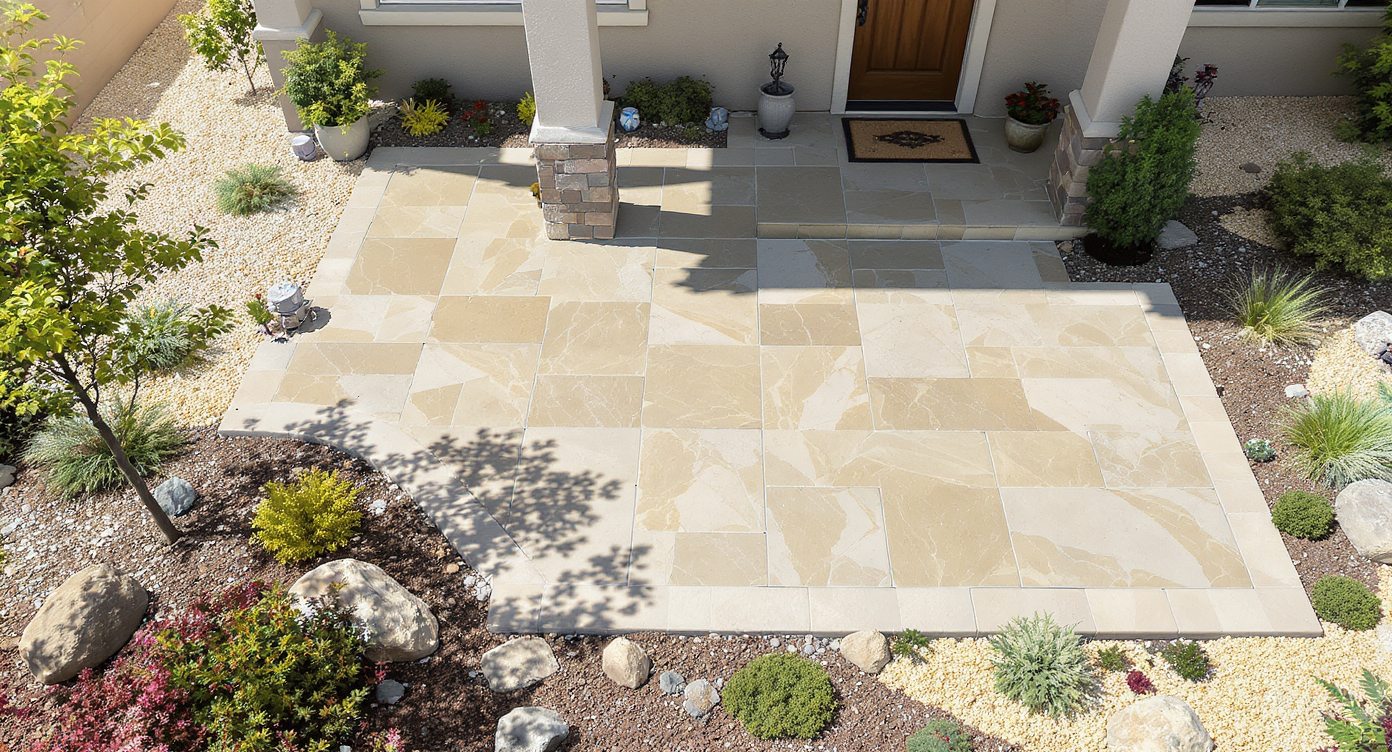
Sloped patios and xeriscape plantings improve drainage and reflect modern landscaping trends.
Experts recommend a 1–2% slope for patios to direct water away from structures and prevent pooling. - Layered planting and year‑round structure - Stone, gravel, and stepping‑stone paths - Outdoor rooms, seating pockets, fire pits - Drought‑tolerant and native planting layouts - Modern curb appeal changes that boost value ReimagineHome.ai lets you preview materials (concrete, granite, porcelain, gravel), pathway widths, grading transitions, and lighting scenes at night. Upload a photo to compare a permeable gravel patio vs. large‑format pavers, visualize 3–4 inch compacted base depth, or test massing of native grasses and ground covers to see how quickly they close bare soil and cut maintenance.
How to Use ReimagineHome.ai to Visualize Yards, Paths & Patios
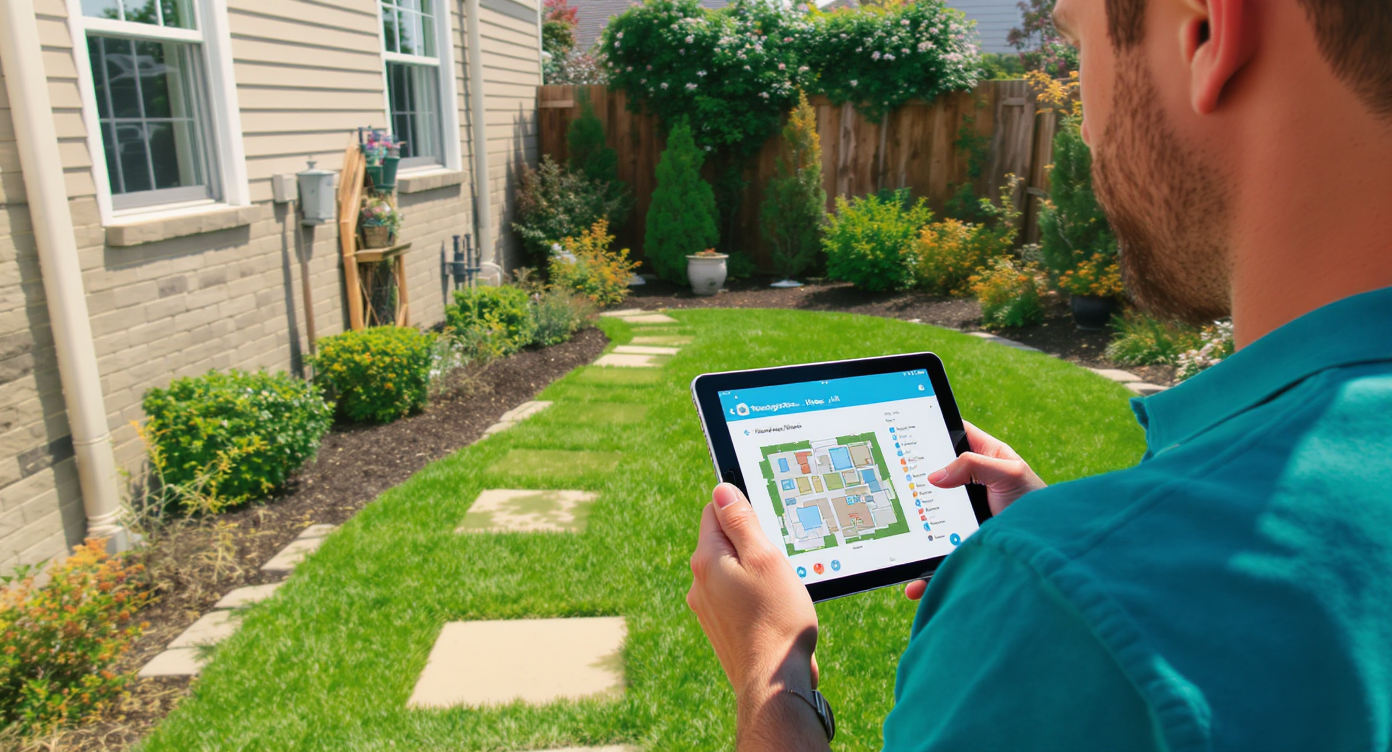
ReimagineHome.ai lets homeowners visualize optimal yard layouts, improving design choices and maintenance.
For airflow and maintenance, shrubs should be planted 18–24 inches from foundations. 1. Upload a clear exterior or yard photo. 2. Pick a style or function (low‑maintenance, modern, family‑friendly, pollinator garden, slope stabilization). 3. Test path shapes, patio sizes (10–12 feet minimum for dining), steps, and terraces with a 1–2% fall for drainage. 4. Experiment with planting layers, lighting, and focal points; space ground covers 12–18 inches apart to knit quickly. 5. Generate multiple versions and compare before committing—then export a shortlist to share with your contractor.
Visualization Scenario
Upload your front elevation into ReimagineHome.ai, choose “low‑maintenance modern,” and toggle between a permeable gravel entry court and large‑format pavers. Add a 42‑inch walk, mass three native shrubs at the corner, and preview warm path lights to see night curb appeal before committing.
FAQ
- How do I design a small backyard layout?
Start with a 36–48 inch main path, a 10–12 foot dining zone if you host, and plant in layered masses to cover soil. Choose permeable hardscaping for drainage and use screening plants to define outdoor rooms.
- How do I create low-maintenance landscaping?
Rule: Cover soil. Apply 2–3 inches of shredded mulch in spring, add pre‑emergent once in early spring and again 6–8 weeks later, and plant drought‑tolerant natives and evergreen ground covers that close gaps.
- Can I preview landscaping ideas using a photo?
Yes—upload a picture to ReimagineHome.ai to visualize paths, patios, grading, planting layers, and lighting before you spend a dollar: https://www.reimaginehome.ai/?utm_source=blog.
- How far should shrubs be from my foundation?
Maintain an 18–24 inch offset (more for large shrubs) to protect airflow, gutters, and siding while allowing maintenance access.
- What materials work best for modern hardscaping?
Concrete, large‑format pavers, natural stone, and gravel. Rule‑of‑thumb: set pavers on a 4–6 inch compacted base plus 1 inch bedding layer; slope finished surfaces 1–2% away from structures for drainage.
Visualize Your Home’s Next Chapter
A cubic yard of mulch covers roughly 100 square feet at 3 inches deep—enough to smother many weeds and retain soil moisture. Mornings under dappled shade, evenings by a low flame, the easy rhythm of a path that guides guests to the door—great landscaping supports how you live day to day. When hardscape, planting, and lighting work together, upkeep drops and enjoyment soars. Before you break ground, explore every possibility. Try ReimagineHome.ai with a single photo.
.svg)

.svg)

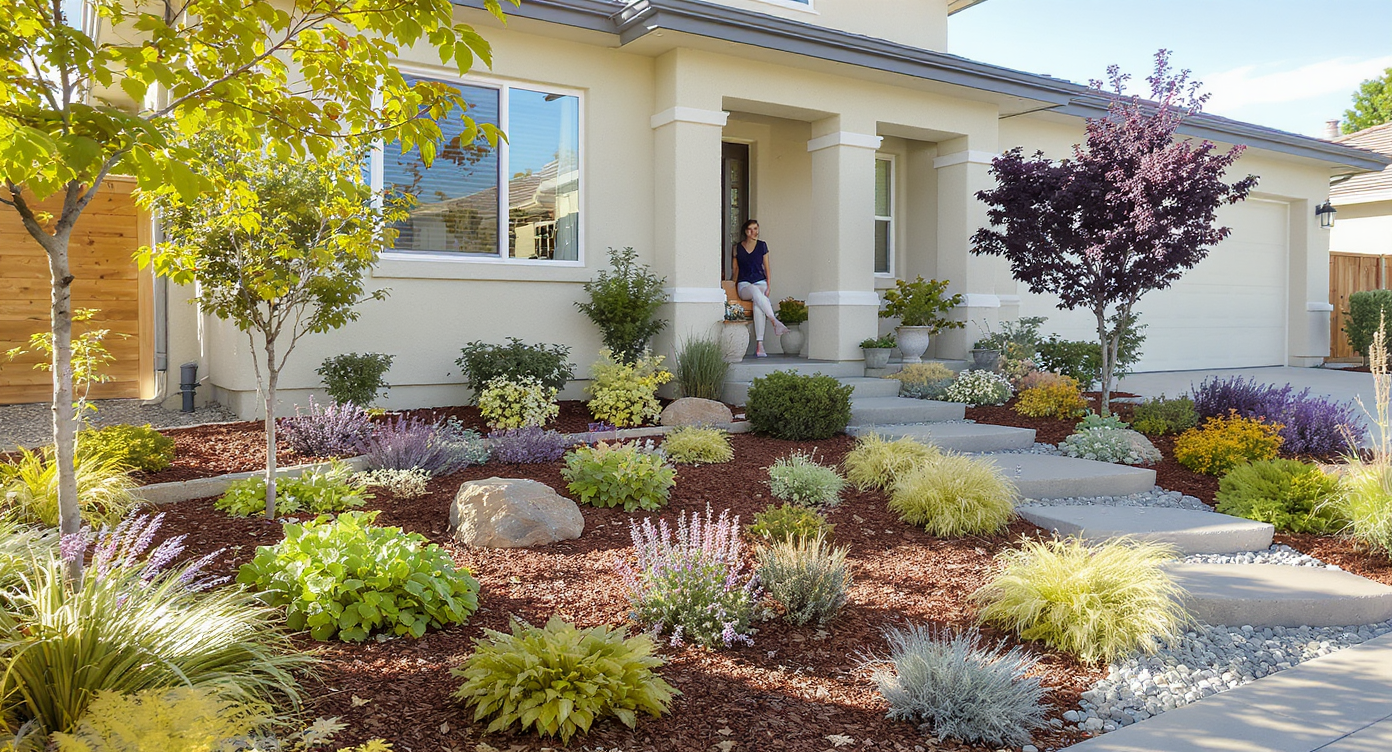
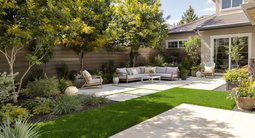
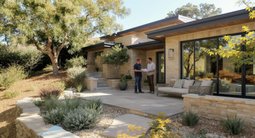


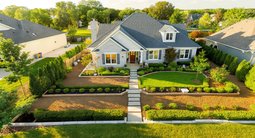
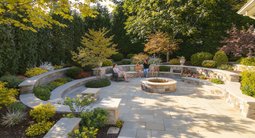


.png)